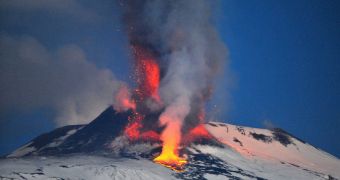This month’s issue of the scientific journal Nature Geoscience witnessed the publication of a new study showing how those in the business of studying volcanic activity must give due consideration to a new type of eruption, which had remained undocumented for a considerable number of years.
Apparently, the scientific community agrees that volcanic eruptions can be either explosive, or effusive.
However, underwater volcanoes are likely to behave in rather peculiar ways, which is why a new type of volcanic eruption must be added to this list.
This “style” of such underwater eruptions could from now on be referred to as “tangaroan,” which happens to be the name of the Maori god of the sea and the name of the vessel involved in this research.
The official website for the Natural Environment Research Council (i.e. a branch of the National Oceanography Center), explains that the molten magma found inside volcanoes also contains gases that one way or another got dissolved in it.
When a volcanic eruption occurs and the magma hits the earth's surface as lava, these gases form relatively small bubbles referred to as “vesicles.”
“By documenting the shape and density of bubbles in pumices generated by an underwater caldera volcano in the southwest Pacific Ocean – the Macauley volcano – we found large differences in the number and shape of “bubbles” in the same pebble-sized samples, different to anything previously documented,” explained Professor Ian Wright.
“This range of bubble densities distinct in these pumice samples indicates that the lava erupting from the caldera was neither vigorous enough for an explosive eruption, nor gentle enough for an effusive flow,” he went on to add.
Thus, it is these researchers’ belief that the bubbles found inside the magma of underwater volcanoes ultimately lead to the creation of buoyant foam that rises to the seafloor and detaches from the volcano in the form of molten balloons whose margins have been chilled.
As these balloons travel towards the sea's surface, the vesicles inside them keep expanding.
“These processes explain the unique bubble structure seen in the samples analysed, which could have only occurred with an intermediate eruption style and in an underwater setting,” Professor Wright maintains.

 14 DAY TRIAL //
14 DAY TRIAL //